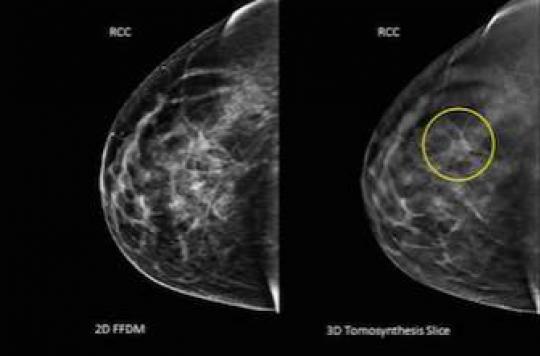Conservative surgery is less burdensome than a mastectomy. But in a quarter of cases, it is not enough to overcome breast cancer.

Mastectomy is considered the best way to prevent breast cancer from coming back. Rightly so, if we are to believe a study published in the JAMA Surgery : it shows that a quarter of patients who benefit from conservative surgery – therefore without total ablation – undergo a second operation.
38% secondary mastectomies
Breast cancer surgery is a subject of debate. When only the tumor is operated (lumpectomy), the question of the margins between the diseased tissues, to be removed, and the healthy tissues is not yet resolved. These hesitations have a direct impact on the recurrence of cancer in women who undergo conservative surgery.
A team from the School of Medicine and Public Health at the University of Wisconsin (USA) reviewed the charts of 316,114 American patients. All had stage 0 or 1 breast cancer and underwent conservative surgery. For 76%, lumpectomy was enough to cure the cancer. But 24% had to return to the operating room. In this group, surgeons most often opted for a second lumpectomy (62%). But in 38% of cases, the operation resulted in a mastectomy, proof that conservative surgery was not sufficient.
Variable risks
This study also provides precise information on people and tumors at risk of recurrence. The average age of women who undergo a simple lumpectomy is 59.8 years, that of women who have to be re-operated is 57.1 years. Large tumors, ductal carcinomas in situ, or invasive lobular carcinomas are most at risk for requiring a second procedure.
“These results can be used by surgeons to better inform patients about the rates of repeat surgery, and how patient characteristics or tumors influence these rates,” conclude the authors of this study. “More importantly, this data can be used to further support uptake of recut recommendations after conservative surgery. “Indeed, these sections make it possible to determine whether the incision was sufficient or if there are still tumors to be removed.
.















